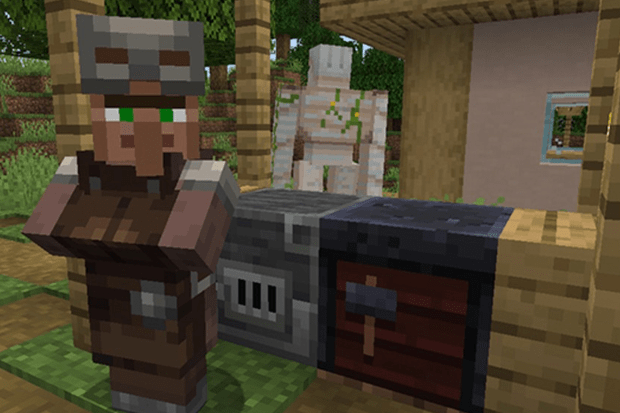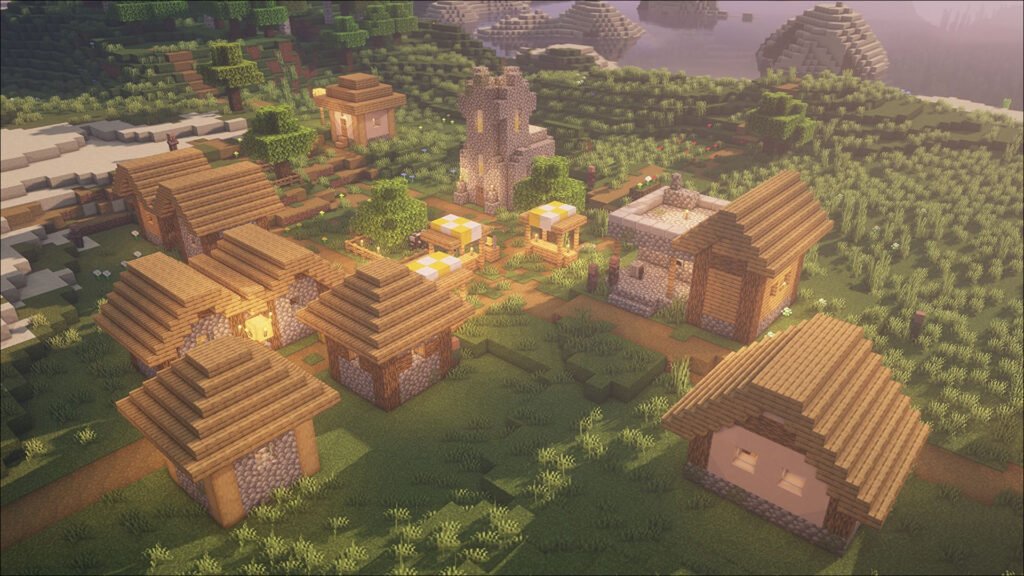What are villagers in Minecraft?

Introduction
Minecraft is a sandbox game that allows players to explore, create, and experience an open-world environment filled with various elements and characters. One such character is the villager, a non-playable character (NPC) that can be found in villages throughout the game. This article provides an in-depth overview of villagers in Minecraft, exploring their unique features, roles, and how they contribute to the overall gameplay experience.
What is a Villager?
A villager is an NPC in Minecraft that inhabits various villages found across the game’s diverse biomes. They are passive, human-like characters with distinct appearances, behaviors, and functions. Villagers provide valuable resources, services, and opportunities for players to engage in trade, making them essential for a well-rounded gaming experience.

Villager Appearance and Behavior
Villagers have a distinct appearance that sets them apart from other characters in the game. They have large heads, long noses, and unibrows. Their clothing varies based on their profession and biome, with each profession having a unique color and design.
Villagers are social creatures and can often be found interacting with one another. They tend to wander around their village during the day, visiting different buildings and workstations. At night or during a raid, villagers will seek shelter indoors to protect themselves from potential threats.
Villager Professions
Each villager in Minecraft has a profession that dictates the items they trade and the services they offer. There are various professions to choose from, including:
| Farmer | Trades crops and farming-related items |
| Librarian | Trades enchanted books, bookshelves, and other library-related items. |
| Blacksmith | Trades weapons, tools, and armor. |
| Cleric | Trades weapons, tools, and armour. |
| Leatherworker | Trades leather armor and other leather goods. |
| Fisherman | Trades fish and fishing equipment |

A villager’s profession is determined by the workstation block they are associated with. Players can change a villager’s profession by changing their workstation, allowing for customization and flexibility in the services offered within a village.
Trading with Villagers
Trading with villagers is a core aspect of interacting with them in Minecraft. Players can trade items with villagers in exchange for emeralds, the game’s currency. Each villager offers a specific set of items and services based on their profession, and as they level up, they unlock more advanced trades.
To initiate a trade, players must right-click on a villager, opening the trading interface. This interface displays the items the villager is willing to trade and the cost in emeralds. Completing trades not only provides players with valuable resources but also helps villagers level up, enhancing their trades and increasing their overall value.
Village Life and Mechanics
Villages in Minecraft are dynamic, living environments with complex social structures and mechanics. Villagers have daily schedules that include working at their workstations, socializing with other villagers, and attending gatherings at the village meeting point.
Villagers will also breed and expand their population under the right conditions. To encourage population growth, players must provide sufficient food, beds, and workstations within the village.
Protecting Villagers
Villagers are passive and cannot defend themselves against hostile mobs or raids. As a result, players must take steps to protect them, such as building walls around the village, placing torches to deter mob spawns, or employing Iron Golems as village defenders.
Conclusion
Villagers in Minecraft are an essential part of the game’s ecosystem, offering valuable resources and services to players. By understanding their roles, behaviors, and mechanics, players can foster thriving villages that contribute to a rich and engaging gameplay experience.
Where to find Villagers
Villagers reside in villages, which appear in various biomes such as plains, snowy plains, savannas, deserts, taigas, and snowy taigas. These villages can also extend into other biomes like swamps and jungles. When a village is generated, it is populated with unemployed villagers, the quantity of which is determined by the specific buildings within the village, as some structures spawn villagers inside while others do not.
In the basements of igloos (provided the basement is generated), a cleric villager and a cleric zombie villager can be found trapped beneath the floor’s carpet. However, in the Bedrock Edition, the villager and zombie villager occupying igloo basements may have random professions instead of always being clerics. Additionally, the cleric villager has the potential to transform into a leatherworker villager, as the cauldron in the basement is situated closer to the villager.

Gossiping
Villagers have the ability to retain specific memories about players through a system known as gossip. They share this gossip with other villagers during their interactions. Each gossip consists of one of five categories and contains a value and a target. The gossip value increases based on different player actions, and the target is the player responsible for the gossip. The combined gossip values contribute to a player’s reputation with the villager, which subsequently affects trading prices and the aggression level of naturally spawned iron golems towards the player.
| Type | Caused by | Amount gained | Decay | Share penalty | Max value | Reputation multiplier |
|---|---|---|---|---|---|---|
| Major positive | Curing | 20 | 0 | 100 | 100 | 5 |
| Minor positive | Curing | 25 | 1 | 5 | 200 | 1 |
| Minor negative | Attacking | 25 | 20 | 20 | 200 | -1 |
| Major negative | Killing | 25 | 10 | 10 | 100 | -5 |
| Trade | Trading | 2 | 2 | 20 | 25 | 1 |
Zombie villagers
When a villager is killed by a zombie, the villager may transform into a zombie villager based on the game’s difficulty setting: a 0% chance on Easy, 50% chance on Normal, and 100% chance on Hard. Zombie villagers can also naturally appear in the Overworld under the same conditions as regular zombies, albeit at a lower frequency, with a 5% chance of occurrence. Additionally, zombie villagers can be found in abandoned villages (known as zombie villages) and igloos. It is important to note that they do not spawn from zombie monster spawners.
Curing zombie villagers
Giving a zombified villager the Weakness effect and then feeding it a golden apple will start the curing process. After five minutes, it transforms into a villager, displaying purple Nausea status effect particles for 10 seconds after being cured. The villager retains the profession it had as a zombie, if it had one before turning into a zombie villager. In Bedrock Edition, if the zombie villager is player spawned, it adopts a randomly chosen profession. The villager can also be a nitwit, as the game counts it as a “profession” but the nitwit villager still can’t work. If employed, the cured villager offers discounts on most of its trades.